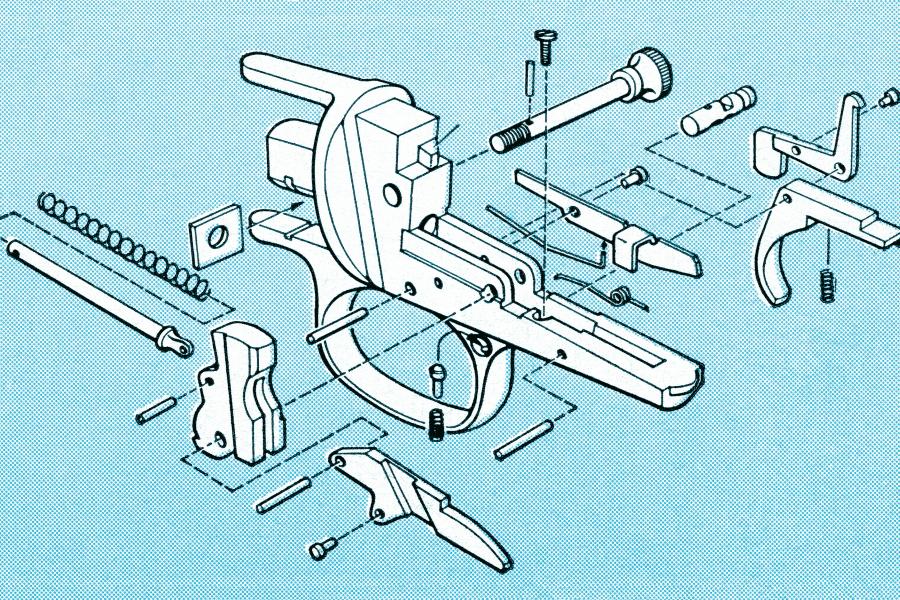- Courses
- GS Full Course 1 Year
- GS Full Course 2 Year
- GS Full Course 3 Year
- GS Full Course Till Selection
- Answer Alpha: Mains 2025 Mentorship
- MEP (Mains Enrichment Programme) Data, Facts
- Essay Target – 150+ Marks
- Online Program
- GS Recorded Course
- Polity
- Geography
- Economy
- Ancient, Medieval and Art & Culture AMAC
- Modern India, Post Independence & World History
- Environment
- Governance
- Science & Technology
- International Relations and Internal Security
- Disaster Management
- Ethics
- NCERT Current Affairs
- Indian Society and Social Issue
- NCERT- Science and Technology
- NCERT - Geography
- NCERT - Ancient History
- NCERT- World History
- NCERT Modern History
- CSAT
- 5 LAYERED ARJUNA Mentorship
- Public Administration Optional
- ABOUT US
- OUR TOPPERS
- TEST SERIES
- FREE STUDY MATERIAL
- VIDEOS
- CONTACT US
Ghost Guns/ What are Ghost Guns?
Ghost Guns/ What are Ghost Guns?
13-12-2024

- In December 2024, Luigi Mangione who is accused in the fatal shooting of UnitedHealthcare CEO Brian Thompson, was found in possession of a "ghost gun" at the time of his arrest.
- Authorities believe Mangione's weapon may have been created using a 3D printer.
- Ghost guns are firearms that cannot be traced, often crafted at home using kits or parts produced by 3D printers.
- These guns are assembled from components like plastic or metal and lack serial numbers, making them challenging for law enforcement to track.
- Initially, these weapons were popular with hobbyists in the U.S. who saw them as a symbol of personal freedom.
- However, because they are untraceable, they have now become attractive to criminals, leading to serious concerns about their misuse.
- 3D printers enable the creation of essential firearm parts such as receivers, barrels, and grips using materials like plastic or metal. These components, when combined with other readily available parts, result in a functional weapon.
- Concerns: Ghost guns have been labeled as the "fastest-growing gun safety problem" due to the risks they pose to public safety.
- Evasion of Background Checks: The ease of assembling ghost guns allows individuals to bypass the background checks mandated for commercial firearm purchases.
- Technological Misuse: The advancement of 3D printing technology, while innovative, has raised alarm over its misuse in producing precision weapons.
Ghost Guns: Growing Threat in the United States
- Ghost guns, officially referred to as Privately Made Firearms (PMF), are a mounting issue in the U.S. due to their untraceable nature.
- Alarming Increase in Recoveries: In 2022, the U.S. Department of Justice seized nearly 25,800 ghost guns, marking an astonishing 1,300% rise compared to 2016.
- Between 2017 and 2021, nearly 38,000 suspected ghost guns were confiscated during domestic operations.
- Recent Trends in Ghost Guns: The recovery and tracing of ghost guns have surged in recent years. The US Bureau of Alcohol, Tobacco, Firearms, and Explosives (ATF) reported nearly 19,300 ghost guns recovered in 2021, a significant rise from 8,500 in 2020.
Are Ghost Guns Legal in the US?
- Biden’s 2022 Rule for Ghost Guns: In 2022, President Joe Biden introduced a regulation to bring ghost guns under the same legal framework as commercially manufactured firearms.
- Key requirements include: assigning serial numbers to ghost guns and conducting background checks for buyers.
- This rule is currently facing legal challenges in the Supreme Court, and a final decision is pending.
Arguments Supporting Ghost Guns
- Proponents of ghost guns argue that they serve as a hobby for firearm enthusiasts and align with the Second Amendment, which guarantees the right to bear arms.
- Supporters emphasize the right of individuals to construct firearms for personal use.
- Existing Legal Framework in US: Under the Gun Control Act of 1968, private citizens are legally allowed to build firearms for personal use without the need for registration or traceability, provided these firearms are not intended for sale.
What is 3D Printing?
Applications and Examples of 3D Printing
|



